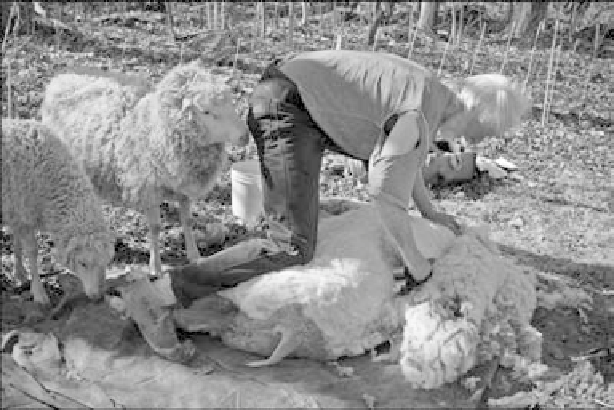Agriculture Reference
In-Depth Information
It may look uncomfortable for the sheep to be flipped over during shearing, but notice the other sheep
waiting its turn. They are ready to lose their coats for the summer!
(Photo courtesy of Brian Boucheron)
Sheep are sheared in much the same way. You can shear them by hand with hand-clippers or use
electric clippers. Either method should be done with care and can be tough to accomplish. It helps
to begin working with your sheep when they are young so they become accustomed to you and
being handled. Often you will want to time your shearings for early summer.
Sit the sheep up or roll her over and clip the stomach area. If possible, hold her steady with your
knees so you can use both hands for better control. Take care around the teats and cut as close to
the skin as possible without nicking the tender skin. Continue clipping each row further to one side
until you cut all the way down the sides and almost to the back. Then work the fleece from the
other direction until you meet your cuts in the middle. Shear the tail end and back of the legs care-
fully, and turn the sheep loose. With practice you'll be left with the full fleece in one large cutting!
With any fleece, whether from your goat or sheep, you'll want to remove any sections that are mat-
ted, dirty, or soiled by feces. Then your fleece can be rolled up and sold in the grease (unwashed)
or washed and sold at its washed weight. Fleeces will lose some weight after they have been washed
and then dried because the oils produced naturally by the animal will be washed away, leaving the
fiber fleece lighter than it was originally.













